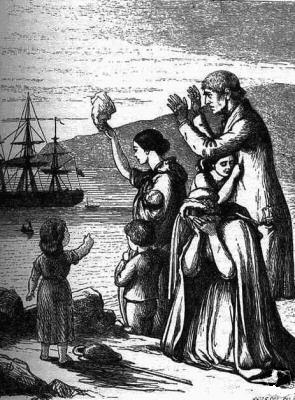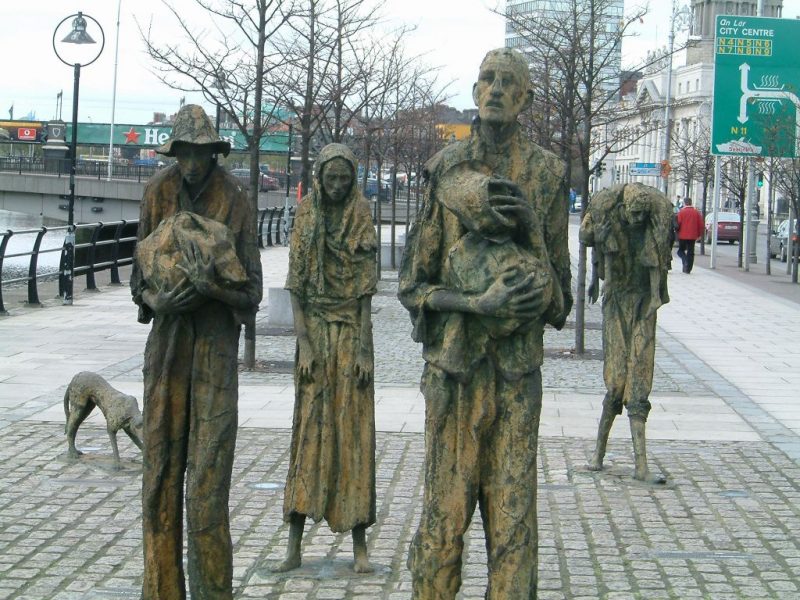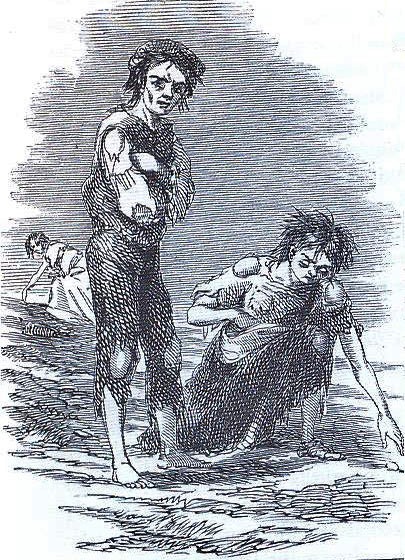
In 2011, the bones of children were found nearly 170 years after they died on what is considered a “coffin ship”. After an analysis of the bones, results showed that the children’s ages ranged from seven to twelve years.
There were vertebra and jaw bones identified and believed to be from Irish children who were trying to flee from the ‘Great Hunger’. The remains were found on Quebec’s Gaspe Peninsula, which is about 500 miles from Montreal, Canada.
After three years of research, Parks Canada has confirmed that the bones do, in fact, belong to children who had fled the Great Hunger in Ireland 170 years ago. During the Great Hunger, nearly one million Irish people had died and another two million fled the country to search for salvation and a better life. Ireland’s population has still not recovered from the terrible tragedy. Many of the two million people who fled traveled to America on what was considered coffin ships. The ships themselves were quite deadly, let alone the voyage to get to America at the time. It is believed that about 100,000 Irish people died on those ships.

One of those ships, the Carricks, set sail from Ireland for Quebec City in 1847. The ship went down just off the peninsula and 87 people lost their lives. The tales of the tragedy were told by the survivors. In 1890, a monument was erected to honor those who died. Nearly 100 years after the monument was built, the skeletal remains were found just 40 yards away. However, without the DNA evidence and carbon dating, experts can’t be sure if the victims traveled on the Carricks.
What the scientists do know is that all the bones are of children. There were two of them who were aged between seven and nine and another one was as old as twelve. The remains did show evidence of rickets, which is a vitamin D deficiency, and malnourishment. The remains were examined forensically by an anthropologist, Isabelle Ribot, and a graduate student, Remi Toupin.
Toupin said that archaeology can protect the story of the victims and memorialize those who were on the ship the day it went down. She added that they can’t be absolutely sure about the conclusions, but she and her team will continue to work on their goal to identify as many people as possible.

An archaeologist at Parks Canada, Pierre Cloutier, said that there is witness evidence for that event, and now there is even a more tangible witness to the tragedy – human remains.
Georges Kavanagh, a resident of Gaspe, said that he can trace his ancestors back to the victims and survivors of the shipwreck. He is looking forward to finally giving those victims a proper burial. He added that he feels he has a connection to these people and considers them to be his family. Why shouldn’t those children get a final resting place?
Here is a little more history of the Great Hunger, otherwise known as the Great Famine:
The Great Hunger was a time of mass starvation, disease, and emigration from Ireland between the years of 1845 and 1852. It is mostly referred to, outside of Ireland, as the Irish Potato Famine. That is because two-fifths of the population was relying on the cheap vegetable for sustenance, when it became decimated by disease. One million people died in the famine and more than a million others emigrated from Ireland, which caused the island’s population to fall between 20 to 25 percent.

The main reason why the crop failed was due to phytophthora infestans, a potato disease commonly known as potato blight. The disease wiped out numerous crops throughout Europe in the 1840’s. Nearly one-third of the population was dependent on the potato for ethnic, political, social, and economical reasons such as land acquisition, absentee landlords, and the Corn Laws. These factors all contributed to the disaster in varying degrees, though the overriding reason for the famine still remains debatable.
Sources:
http://www.irishcentral.com/roots/history/-Childrens-bones-from-Irish-Great-Hunger-discovered-on-Canadian-beach.html
https://en.wikipedia.org/wiki/Great_Famine_%28Ireland%29